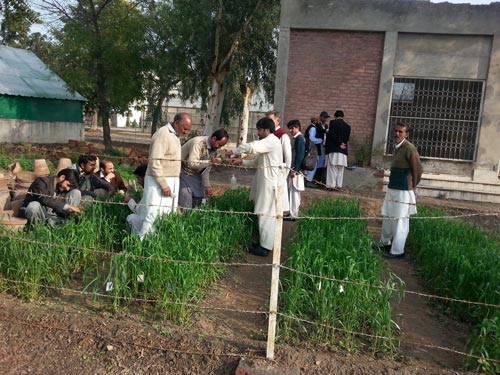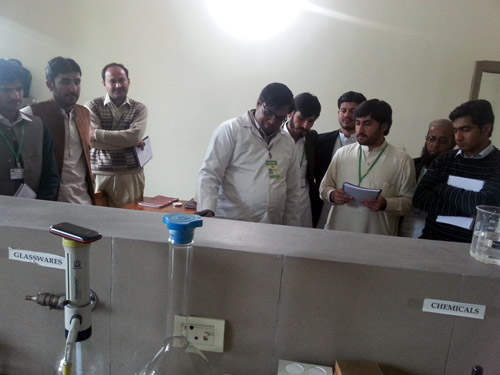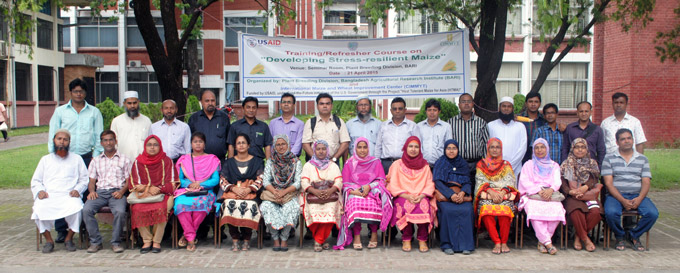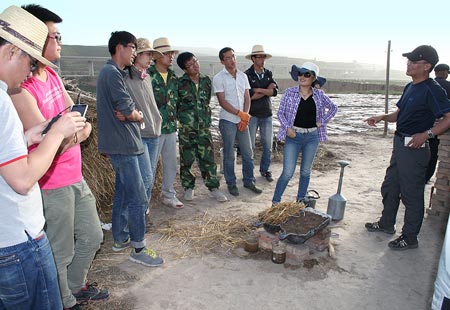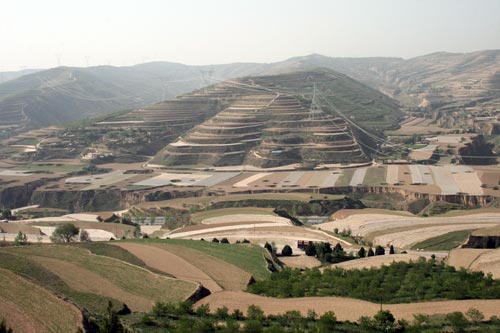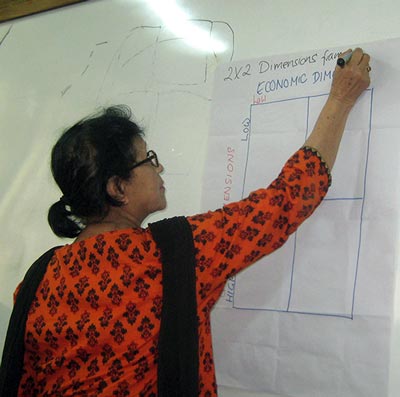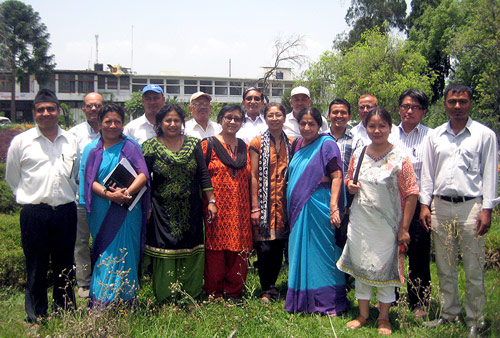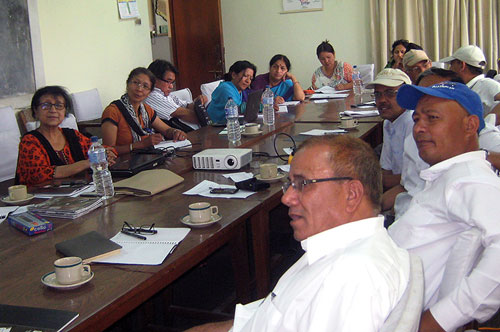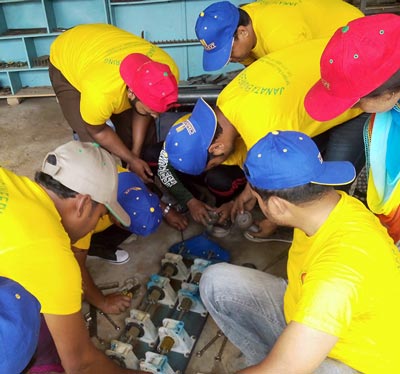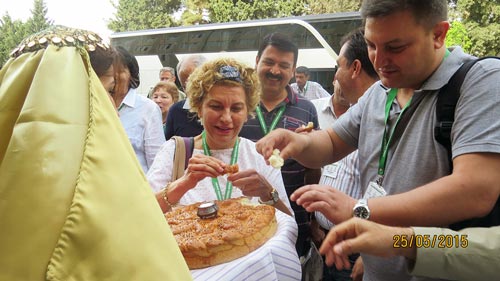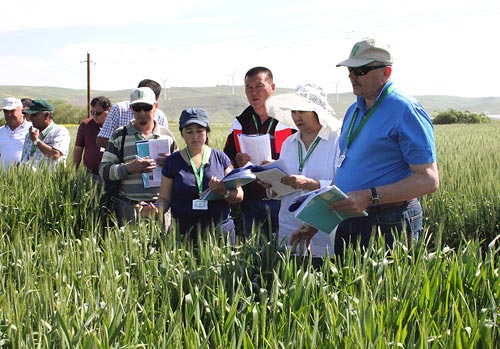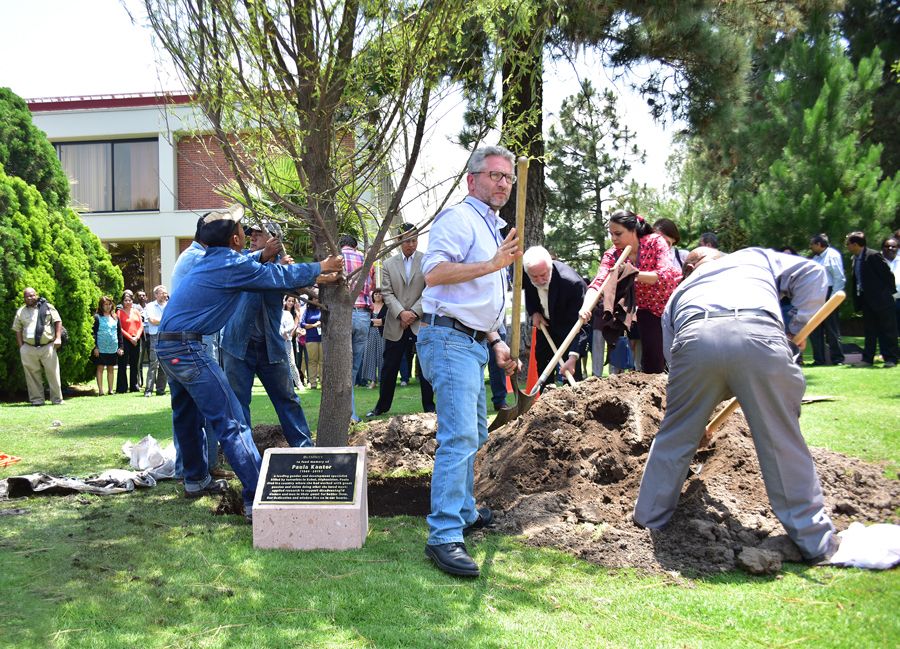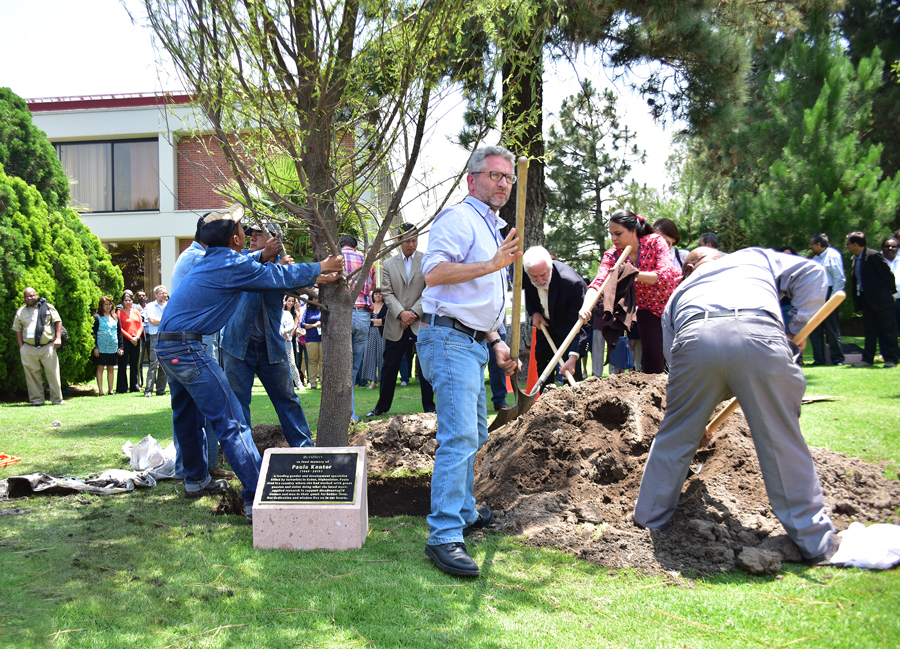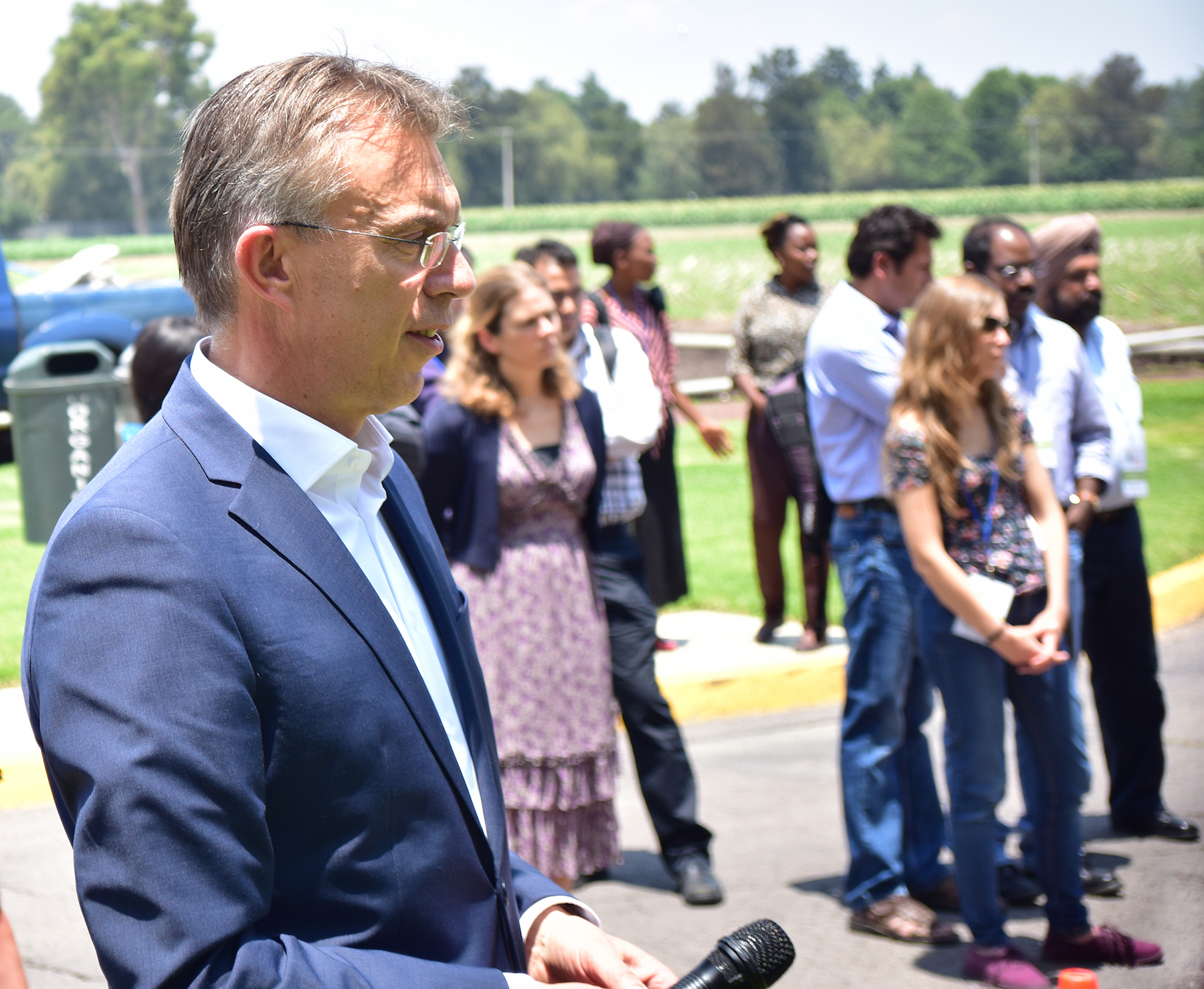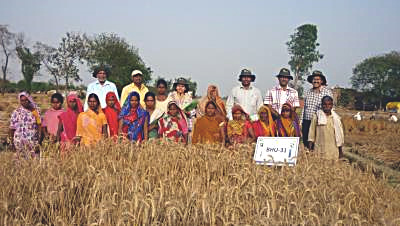A delegation of 15 Nepalese seed entrepreneurs learned about various business models and innovations for seed industry development on their first visit to India. The visit, sponsored by the Cereal Systems Initiative for South Asia in Nepal (CSISA-NP), lasted from 1 to 10 June.
Participants learning about methods for maize seed germination test at Kaveriseed Lab, Hyderabad. Photo: Narayan Khanal
According to Arun Joshi, Country Liasion Officer, CIMMYT-Nepal, Nepalese seed companies are in their initial growth phase and constrained by the lack of research and development, low business volume, limited seed processing and storage facilities, and low seed capital. To help them overcome these challenges, CSISA-NP recently initiated a business mentoring initiative to build the capacity of small and medium enterprises engaged in wheat and maize seed production.
A team of CSISA-NP experts assessed the potential and challenges of Nepalese seed companies and established a good relationship with them. “After the assessment, 15 Nepalese cereal seed production entrepreneurs from Nepal’s hills and Terai (plains) were identified for a ten-day visit to India,” reported Dilli K.C., Monitoring and Evaluation Specialist, CIMMYT-Nepal.
During the visit, the Nepalese delegation observed many Indian seed business components including research and development programs, seed processing facilities and government farms at four major seed enterprise centers: Delhi, Kashipur, Hyderabad and Elluru.
The entrepreneurs received first-hand information on ways to link contract farmers with private companies, how to set up linkages for hybrid seed production, and how to enhance maize seed germination through cob drying. “We have to establish demos of our products and maintain good relations with seed producers and consumers,” said entrepreneur Tikaram Rijal, Managing Director, Global Agri-Tech Nepal Limited, after the visit.
Participants compare cob size of different hybrid maize varieties at Bioseed company in Hyderabad. Photo: Narayan Khanal
The participants also learned how smaller seed companies that work with open-pollinated varieties can maintain seed quality and market their brand. “For our growth and sustainability, R&D activities should be promoted even in open-pollinated seeds,” said one of the participants, Subhas Upadhaya, Chairperson, Lumbini Company.
India’s private sector shared the strategies they had adopted to manage challenges during their growth period and showed a willingness to help build the capacity of Nepalese seed enterprises through internships, short-term training and collaborative research.
During discussions with the National Seed Association of India (NSAI), the visitors learned about the role seed associations play in the growth of a country’s seed industry and in implementing seed policies. A memorandum of understanding was signed between NSAI and Seed Entrepreneurs Association of Nepal (SEAN) to foster better collaboration between seed companies from both countries.
“The visit and participants’ interaction with Indian seed companies helped them realize the importance of having a clear strategy both for SEAN and their individual businesses in order to be more successful,” added Joshi. CSISA-NP will continue to strengthen its collaboration with seed enterprises and guide them in developing their business plans, according to Andrew McDonald, Project Leader, CSISA-NP.



